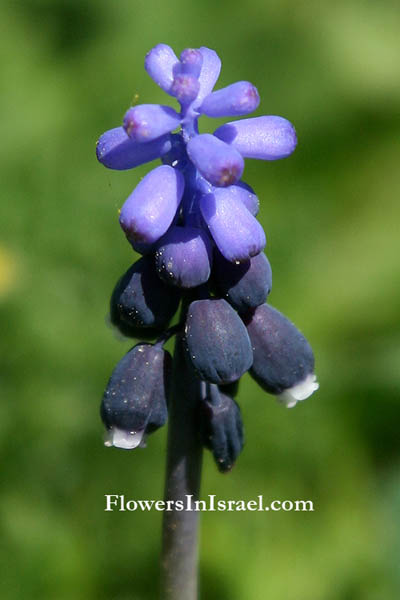Hebrew: כדן סגול, Arabic: بصل الحيّة
| Scientific name: | Muscari commutatum Guss. | |
| Common name: | Dark Grape Hyacinth | |
| Hebrew name: | כדן סגול | |
| Arabic name: | بصل الحيّة | |
| Family: | Liliaceae, שושניים |

|
| Life form: | Geophyte | |
| Stems: | Erect flower stalk, unbranched scape, hirsute | |
| Leaves: | Rosette, sessile, parallel venation, linear, entire margin | |
| Inflorescence: | Raceme | |
| Flowers: | Corolla, purple, 6 fused tepals, urn shaped, small opening with 6 tiny black teeth at its outer end | |
| Fruits / pods: | Capsule, dehiscent loculicidal capsule, green, changes beige when ripe and dry; seed, spherical-oval, black | |
| Flowering Period: | January, February, March, December | |
| Habitat: | Batha, Phrygana | |
| Distribution: | Mediterranean Woodlands and Shrublands, Semi-steppe shrublands, Shrub-steppes, Deserts and extreme deserts | |
| Chorotype: | Med - Irano-Turanian | |
| Summer shedding: | Ephemeral |
|
Derivation of the botanical name: Muscari, grape-hyacint; Greek moschus, musk; an allusion to the sweet scent of some species. Umberto Quattrocchi says: A Turkish name recorded by Clusius in 1583. Latin muscus, i "moss, musk." commutatum, commuto, to change, to exchange; changeable. The Hebrew name: כדן, kadan, hyacinth.
|